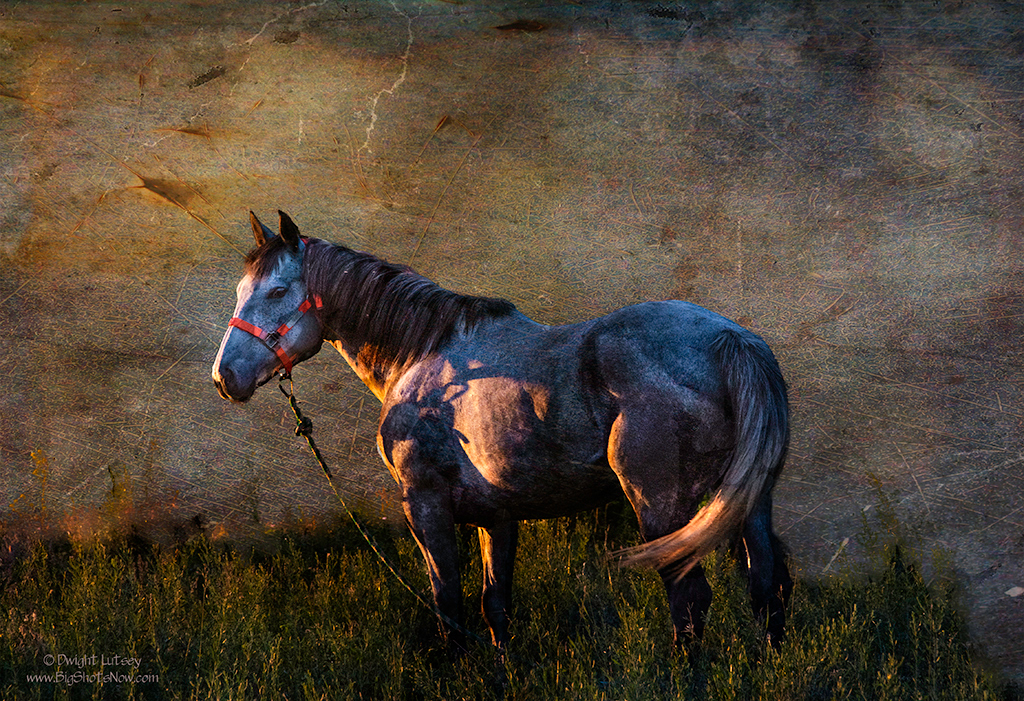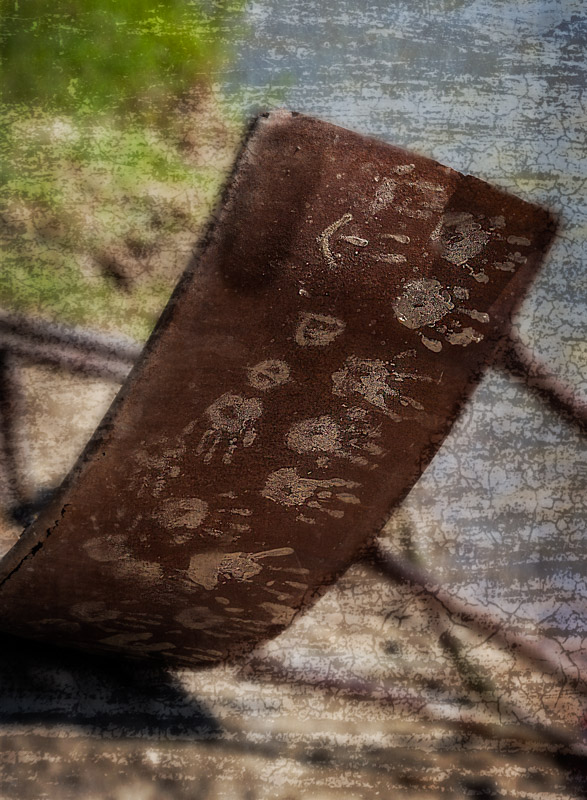
Night was just beginning to fall. The sun was at the edge of the land casting its golden light horizontally across the prairie lighting up one side of everything in sight. In moments it will have dropped behind the low hills and darkness would take over for its share of the daily cycle. Calm was setting in and there were the final sounds of the day shutting down. A tethered horse knickered nearby. The muffled sounds of people getting their fires going in preparation for fixing supper. The constant background sound of the Little Bighorn river gently flowing past. Soon everyone will have completed their chores, checking on their stock, making certain things were buttoned up and secure. There was just enough time to wander the edges of the camp and take a few pictures. It was the end of a very good day.
The setting was the final night of the reenactment of the Battle of the Little Bighorn at the Little Bighorn Battlefield National Monument near Crow Agency, Montana. Every year reenactors recreate the battle using people from the Crow tribe and groups like the 7th Cavalry reenactors and others to replay the battle that never changes. It is a spectacular event with Indians riding bareback amid the swirling dust, horse herds being run thru the viewing areas, the 7th cavalry drilling in formation, or fighting for their lives in the battle.
Even though the battle reoccurs each day of the event, it is an incredible display of emotion and historical accuracy, at least as much as it can be without the loss of life, on the very ground the original battle took place or as close to it as possible. The actual place where Custer and the men of the 7th fell is in the National monument itself. However the reenactment takes place literally yards from the edge of monument. Passions run high as all participants get in the spirit of the reenactment. Then at the end of day things quietly revert back to present day and the time travel is finished for the day.
Tethered is an image taken at just that perfect moment between the ending of the light of the Golden hour and the coming night. The image of course has been photoshopped and presented in its new form without apology for its reinterpretation, showing how memories can be presented as fine art and also as my personal connection and interpretation of the Battle of the Little Bighorn. After all an image is just an image regardless of how it came to be created and once created becomes art in its final form. And as always art is in the eye of the beholder.


You must be logged in to post a comment.